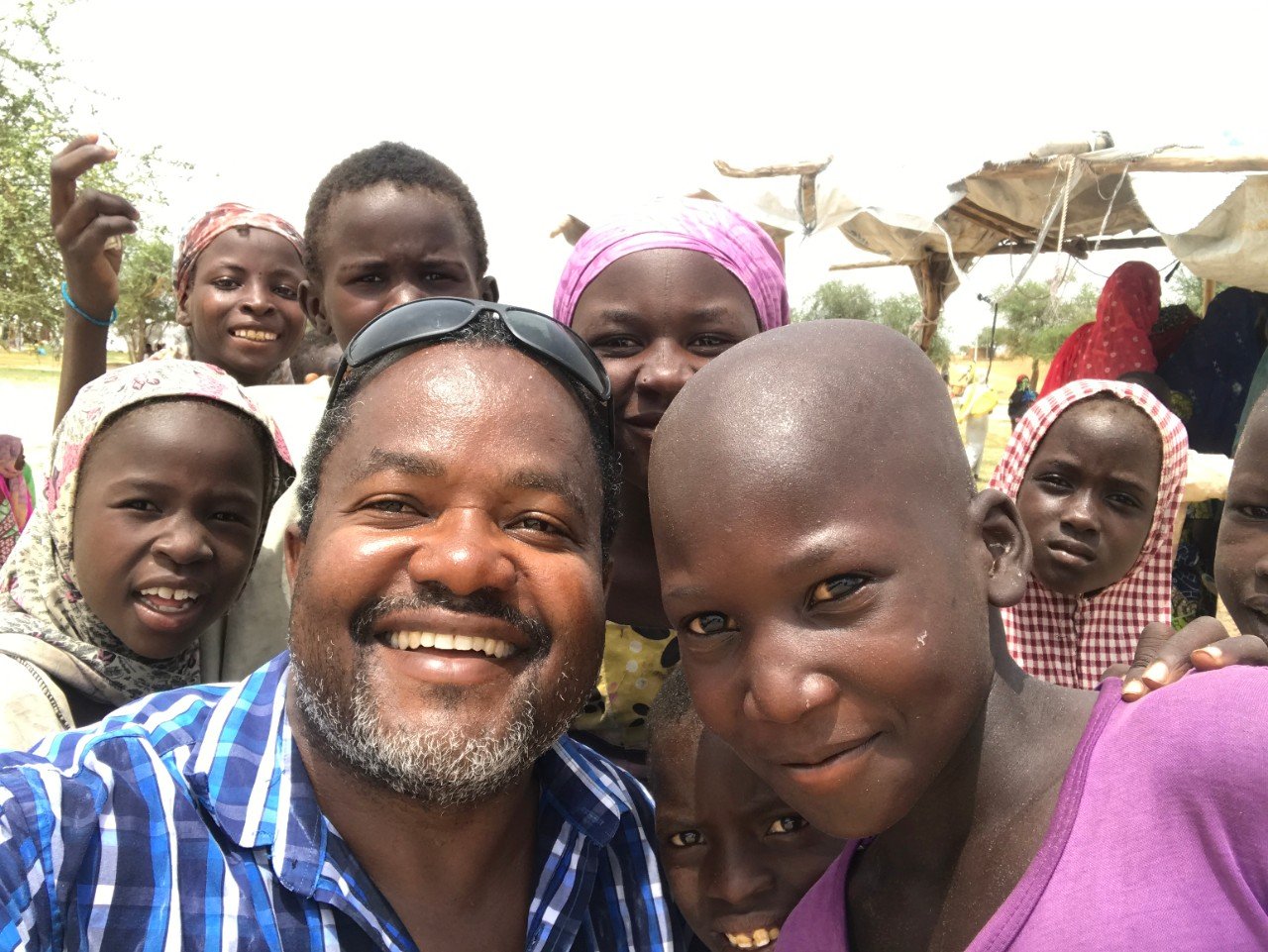DIFFA, Niger: Remote, dusty, dangerous – the border region of Diffa hosts over 106,000 Nigerian refugees and more than 127,000 internally displaced people forced to flee Boko Haram’s terror. Located a two-day drive from the capital Niamey, humanitarian organisations in Diffa face seemingly insurmountable challenges, from insecurity and remoteness to lack of funding. At least now, lack of connectivity is no longer on this list of challenges.

In an area where internet is sometimes frustratingly slow, but most often completely non-existent, the UNHCR-led Refugee Emergency Telecommunications Sector (RETS) has deployed the Government of Luxembourg’s ‘emergency.lu’ solution, providing reliable connectivity to implementing partners Action Pour Le Bien Etre (APBE), Karkara, and Secours Des Oubliés (SDO).
“Connectivity allows us to better design and implement programmes that will help improve protection and assistance of individuals,” says Abdouraouf Gnon-Konde, Deputy Representative, UNHCR Niger. “Internet improves the way UNHCR and partners work together for people of concern.”
The population of Diffa has almost doubled since 2015, as people flee violence, forced recruitment and suicide bombings. In an area that already suffers from chronic poverty, harsh climate, recurrent epidemics, poor infrastructure and limited access to basic services, the influx continues to stretch already scarce resources.
Emergency Telecommunications for Refugee Response
Within the framework of the Refugee Coordination Model, RETS provides vital internet connectivity and security communications services to UNHCR, its partners and the extended humanitarian community in emergencies. The emergency.lu deployment in Diffa is the first of such where services are being provided for partners, through partners.
“As ICT, it’s our role to ensure people responding to the needs of refugees have the technology tools available to efficiently, effectively and safely carry out their work,” says Doug Greene, Chief Information Officer and Director of Division of Information Systems and Telecommunications (DIST), UNHCR. “Across Africa alone, UNHCR is responding to the needs of over four and a half million refugees and in each and every one of these situations, communications technology is critical. The emergency.lu deployment in Diffa is the first where we have been able to quite literally link partners who support us with services, and partners who support the lives of displaced people and refugees.”
Connecting Sites, Bridging Gaps
The emergency.lu solution has been installed in UNHCR’s Diffa office, and wirelessly linked to the offices of partners to provide connectivity to these sites, including Sayam Forage refugee camp. “The most challenging part was the link to Sayam Forage,” says Fardy Mandy, West Africa Senior Regional ICT Officer, UNHCR. “The straight line distance is 36km, so we needed long-distance microwave antennas which look like two giant balls. We had one of us at the office, and another at Sayam Forage, carefully pointing the balls to each other to establish the connection.”
“Connectivity is a medium to bridge the gap,” says Abdouraouf. “We have a detailed learning programme in Diffa to help kids who came from Nigeria maintain access to the Nigerian curriculum.” At the end of the 2017 academic year, groups of junior and senior secondary school refugee students temporarily returned to Nigeria to complete their exams. In partnership with Italian non-governmental organisation COOPI, UNHCR is finalising an action plan for Nigeria National Examination Council accreditation of two distance examination centres in Diffa.
“Now we have internet, all these things will improve,” says Abdouraouf. “We can use the internet to support better education for children in the camp.”

A lighter moment with children who watched the equipment being installed in Sayam Forage Camp. Photo: UNHCR © UNHCR/ Fardy Mandy
Supporting Safety & Security
Communications technology enables better and faster humanitarian assistance and protection, as well as supports safety and security in the world’s most challenging and remote environments.
Diffa has suffered a number of Boko Haram attacks in recent years. In June two female suicide bombers entered the internally displaced people camp of Kablewa and detonated the bombs they were carrying, killing themselves, as well as two others, and injuring 11 more.
“The same internet link we connected also supports security communications,” says Fardy. “Through the internet we can connect the two-way VHF radio so that someone in Sayam Forage can speak to someone Diffa.” RETS connectivity services in Diffa are being used by 30 partner staff. Equipment and services are being provided at no-cost to UNHCR, for use by its partners, by the Government of Luxembourg for an initial period of 6 months.
The next step for the project is to extend connectivity services to the new office being built for UNHCR’s Government of Niger counterparts. “The way that protection was before, registration was before, security access was before, education was before, partners working together with UNHCR and refugees themselves – all of this has changed,” says Abdouraouf. “Connectivity changes the way we communicate and operate.”
